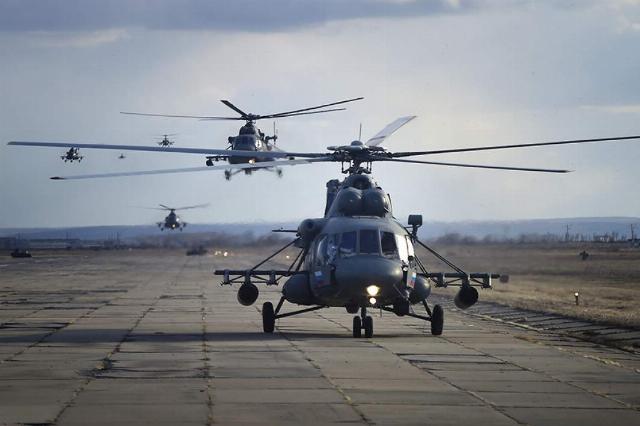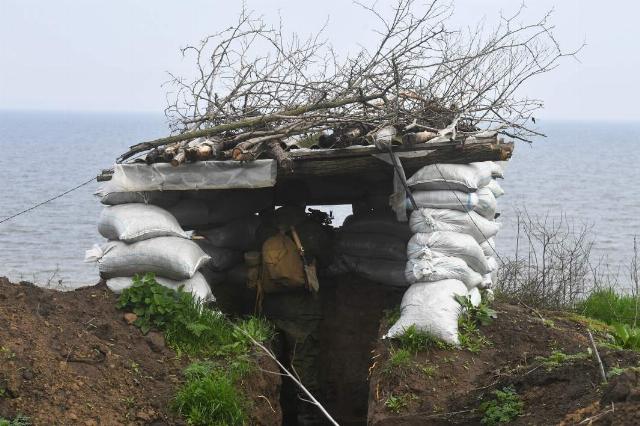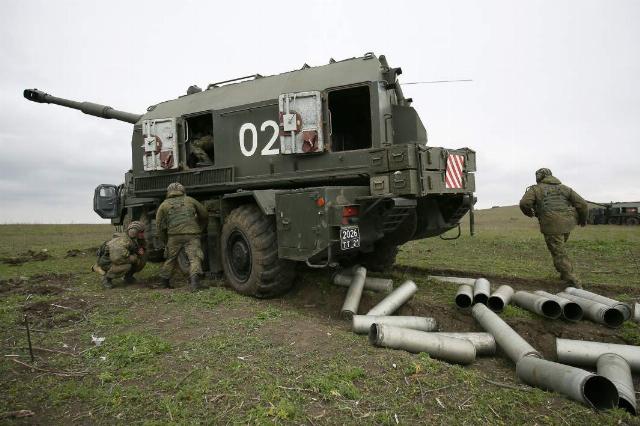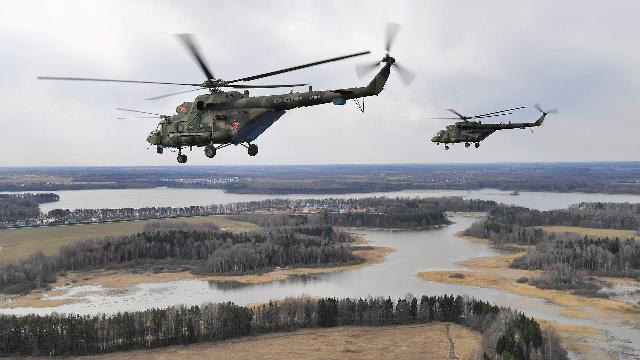Transport and combat helicopters will be added to the new association
Transport aircraft will appear as part of the Dnieper flotilla. It will be used in amphibious operations, as well as for the transfer of goods. According to experts, this indicates that the war zone will shift beyond the Dnieper and cover reservoirs on the way to Odessa. What kind of aircraft can give the Dnieper flotilla and what they are capable of — in the material of Izvestia.
Helicopters won't hurt
The Dnieper flotilla will be provided with military transport helicopters and airplanes, sources told Izvestia in the military department. They will be used in amphibious operations, as well as for cargo transportation. The specific types of helicopters and aircraft that will work in the interests of the flotilla will be determined later.
— Probably, Mi-8/Mi-17 series helicopters, combat and transport-combat Ka-29 helicopters can enter there, — suggests military expert Dmitry Boltenkov. — It will be necessary to transfer reconnaissance and sabotage groups to the other bank of the Dnieper. If we are preparing to cross the Dnieper, then helicopters will not hurt. It is also necessary to fight against various enemy targets, primarily boats. It is possible that the flotilla will be given AN-26 aircraft — the workhorse of our armed forces.

Classes of Rosgvardiya special forces soldiers on parachute-free landing from a Mi-8 helicopter in Tatarstan
Image source: Photo: TASS/Egor Aleev
According to the expert, aviation is necessary when operating in the area of the Dnieper-Bug estuary.
— If such a decision is made, it should be effective. However, you will have to act in the enemy's air defense zone. This requires very high training of the crews. By themselves, flying over water requires special skill. The creation of new formations indicates that we are preparing to liberate Odessa. And beyond the Dnieper to Odessa there are a large number of lakes and other reservoirs. During the Great Patriotic War, even landings were carried out through them.

Mi-8 AMTSH helicopters at Vozdvizhenka reserve airfield during a tactical flight exercise at Chernihiv Airbase in Primorsky Krai
Image source: Photo: TASS/Yuri Smityuk
The Mi-8 in the modern modification of the AMTSH is a transport and assault helicopter designed to transport personnel, as well as various cargoes inside the cabin and on an external suspension. It can also be used for rescue operations, used in amphibious, transport, combat or sanitary versions. It has the unofficial name "Terminator", under this designation it was demonstrated in 1999 in the UK at the Farnborough Airshow. It was adopted by the Russian Air Force in 2009.
The maximum speed is 260 km/h, the maximum take—off weight is up to 13,000 kg, the range is 465 km, the practical ceiling is 6000 m. It can carry up to 36 paratroopers, or 12 stretchers with escorts, or 4 tons of cargo in the cabin or on a suspension.

A Ka-29 helicopter during large-scale exercises of the troops of the Southern Military District and the Airborne Forces at the Opuk training ground in Crimea. The year 2021
Image source: Photo: RIA Novosti/Vadim Savitsky
The Ka-29 is a multi—purpose transport and combat helicopter. It is designed to increase the mobility and effectiveness of amphibious operations in water areas, the destruction of armored surface and ground targets. It is designed to provide transportation from ship to shore and vice versa of cargo and landing units, its fire support day and night under various weather conditions. It is built on the basis of the combat anti-submarine Ka-27, has two applications: combat and transport. The Ka-29 helicopters entered service with the Russian Navy in 1995.
The maximum take—off weight is 11,500 kg, the maximum speed is 280 km/ h, the practical range is 800 km, the practical ceiling is 5,000 m, the crew is two people, the payload is 16 people, or four stretchers and six sedentary wounded, or 2 tons of cargo in the cabin or 4 tons on a suspension.
The new flotilla
The creation of the Dnieper River flotilla was announced on March 20 by the head of the Ministry of Defense, Sergei Shoigu. In addition, an army corps, a motorized rifle division and a riverboat brigade will also be formed.
The flotilla will mainly operate on the Dnieper and in the Dnieper-Bug estuary, and will do the same as its predecessor during the Great Patriotic War: it will fight enemy boats, land troops, create bridgeheads, and possibly force the Dnieper.

A Russian serviceman on the first line of defense on the banks of the Dnieper River in the area of the SVO
Image source: Photo: RIA Novosti
Dnipro became the scene of fierce fighting in the summer of 2023, when the Ukrainian Armed Forces launched their failed counteroffensive. In the Kherson direction, militants on motorboats and boats crossed to the Russian coast in an attempt to seize and hold a bridgehead. In the village of Krynki, Kherson region, they managed to do this. Despite the fact that there was no military sense in this bridgehead, and the militants suffered huge losses from the fire of Russian troops, they transferred reinforcements there for a long time. Russian gunners and drone operators staged a real hunt for boats that transported personnel under the Wings.
On February 20 of this year, the head of the Defense Ministry, Sergei Shoigu, reported to the president that the village was under full control of Russian troops. The minister said that the main breakthrough site was planned in the Krynok area and four brigades of the 30th Marine Corps of the enemy were concentrated in this direction.

Military personnel at the coastal self-propelled artillery complex A-222 "Bereg" at the training ground on the Black Sea coast of the Krasnodar Territory during exercises of crews of coastal rocket and artillery complexes in the Krasnodar Territory
Image source: Photo: RIA Novosti/Vitaly Timkiv
Earlier, Izvestia reported that 130-millimeter self-propelled artillery installations A-222 "Bereg" will also serve as part of the flotilla. In addition, marine and special forces units are already being formed in its composition.
Bereg is a self—propelled artillery system with 130 mm caliber guns that detects and hits surface targets capable of moving at speeds over 100 knots (185 km/h), as well as ground targets, including enemy landing troops.
The ammunition consists of 40 rounds, including high-explosive and fragmentation shells. The chassis is a four—axle all—wheel drive all-terrain vehicle with a 525 hp diesel engine. The maximum speed on the highway is 60 km/h. The fuel reserve is 850 km. The crew consists of eight people. Each complex consists of a division with three batteries and includes a central post and two combat duty support vehicles. The central post is equipped with a radar and an optoelectronic station, which calculate the coordinates of the target and provide data for firing. The gun for the complex was developed on the basis of a cannon from the ship's AK-130 rapid-fire launcher. The firing range is up to 23 km.
Alexey Mikhailov
Roman Kretsul

